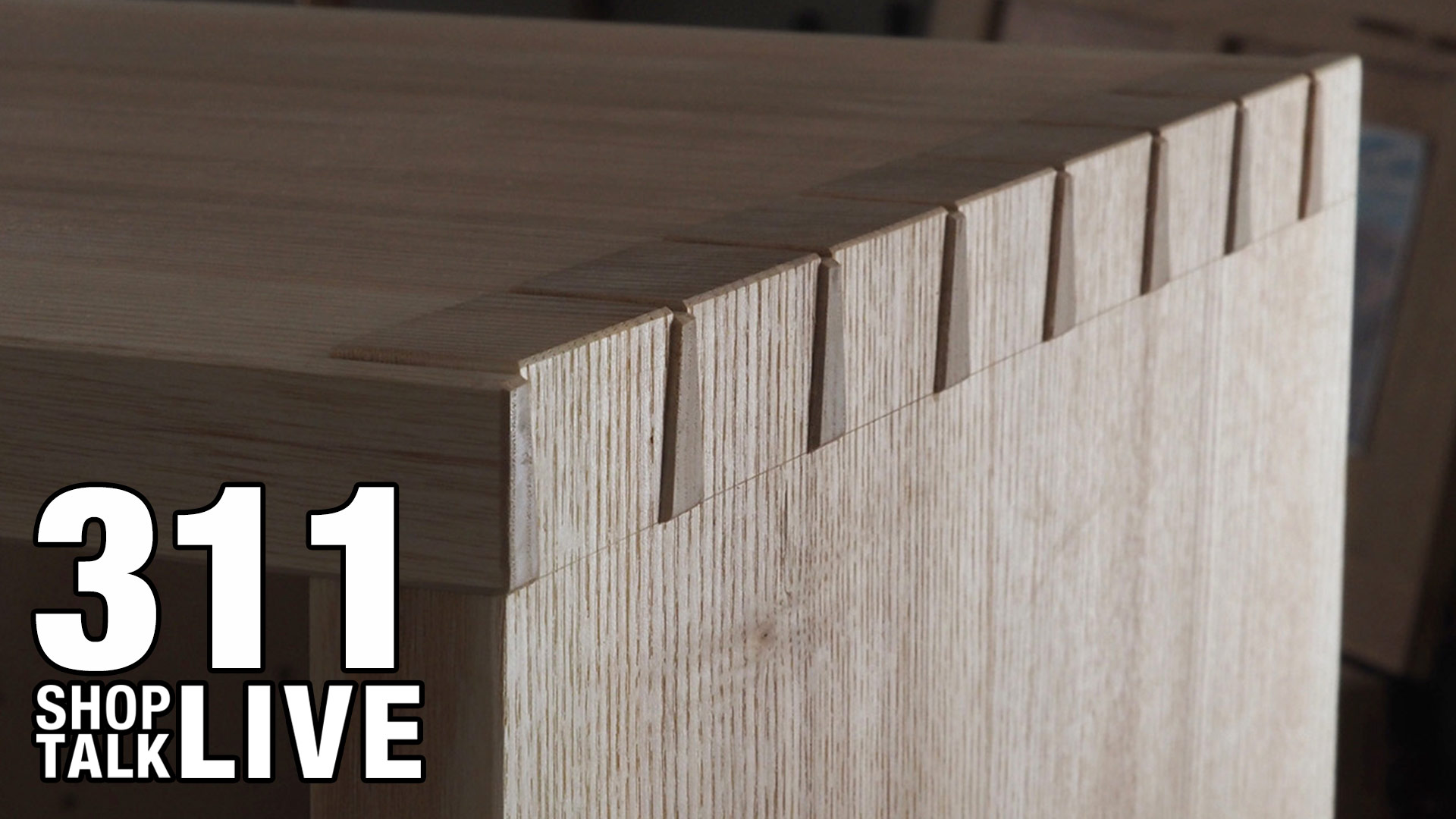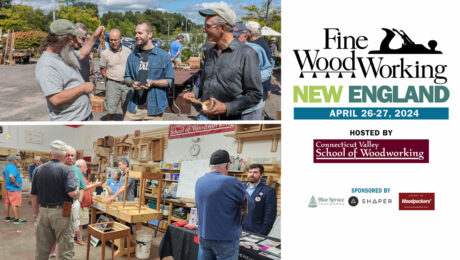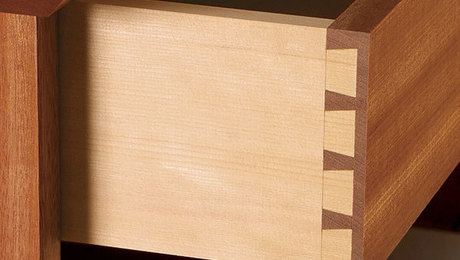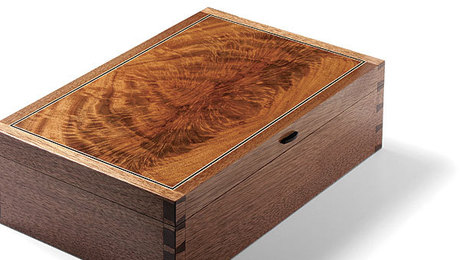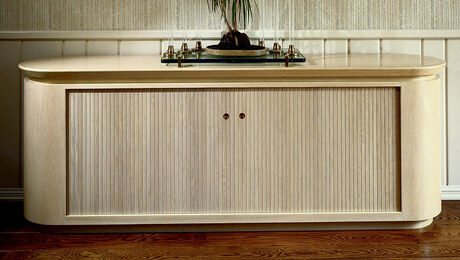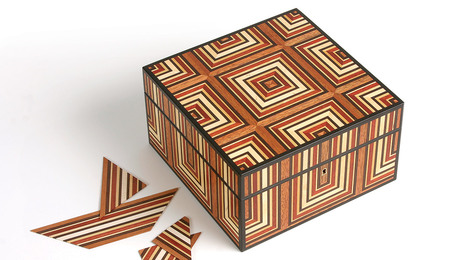Question 1
From David:
Everyone wants a good tight dovetail joint. Older pieces often have drawers with mangled, gappy, ugly dovetails that were plenty strong but stayed hidden so appearances didn’t matter. Dovetails joining a case or are featured prominently might be highlighted more and hopefully appear more even and tight fitting. Now that we are required to post every dovetail joint to ig, many have raised the bar in keeping the highest standards for appearance out of every dovetail joint, seen or hidden. However, I quite often see beautiful dovetails that have a deep, gouging knife mark across the grain. Of course, the first step in layout would’ve been to strike a line for board thickness and the seat for your pins, then tails later. But once the joint is fitted and glued, why not take a couple of passes with a plane to tidy up the layout lines? This has to be done otherwise oil or finish will accumulate in the knife mark and highlight it in the finished piece. Is it just me who thinks that, if I am trying to show off some dovetails and make them look pretty, I should at least go through the trouble of planning out my layout marks? Or nobody cares about the ugly lines and I should keep quiet? The layout marks don’t have to be super deep, gouging marks and that’ll make it easier later.
An example where we can pick on Mike is his (wonderful) cover piece in FWW 303 from last summer where the case was dovetailed and these layout lines are clearly visible on the cover image. His case did have an 1/8” reveal (so the pins stuck out). I concede in this situation that I wouldn’t know how to clean off the layout line. Any ideas on how you would approach that challenge?
Question 2
From Tyler
I’m making a monitor stand for my computer. The carcass is cherry while the doors will be tambours made out of quarter-sawn hard maple, veneered with Karelian Birch veneers. I’ve been following this woodworker out in Poland for a while and he veneers his tambours with burls and there is absolutely ZERO disruption in the grain pattern. I’m assuming he’s not using a table saw, or bandsaw to cut the tambour after they’ve been veneered, but rather cutting the slats and veneering afterward.
Basically, I’m looking for speculation on how he or any of you would go about getting zero interruption in your veneered tambour doors.
Discussion on the future of affordable table sawsPlease take our two-question survey on affordable table saws here. From Ben: Credit where credit is due, ToolGuyd’s reporting on this debate has been extensive and relatively free of added editorialization. I highly recommend checking it out. If you’re looking for a quick catchup on the subject here is as quick of a summary as I can muster.
Newer items of note: If you’d like to dive deep, the CPSC has a YouTube channel with the hearing available for viewing. As far as I can tell, many of the CPSC commissioners have been dumbfounded that other manufacturers—many of whom have more than enough profits to dedicate to AIM research and implementation—have done nothing on the matter since 2006. This line from CPSC commissioner Richard Trumka Jr. is probably the most telling of the exchanges. “Let’s for a moment indulge the other possible reality, the one you’re trying to suggest could exist, where you’ve been on notice for 20 years and you haven’t been able to fund a solution. I’ve also got trouble believing that one. You’re certainly not short on money you could have used to either license technology or develop your own. I’ll just look at one company as an example here. In May of 2022, Stanley Black & Decker announced $2 billion in stock buybacks. Their CEO said the buybacks demonstrate the company’s commitment to deliver shareholder value through disciplined capital allocation. Do you know what disciplined capital allocation means?” If you can’t get through that video (understandable) ToolGuyd has a pretty thorough recap here. The current (12/23) CPSC proposal can be found here. |
Question 3
From Bart:
When you have some scraps, what is your process for coming up with a design whether it is an experiment or an actual thing? Normally I start with an idea and figure out how much material I need. This starts with the material and designing to it. This is a hard concept for me, but I don’t know if it is because I don’t have enough practice or is it a hard concept.
Every two weeks, a team of Fine Woodworking staffers answers questions from readers on Shop Talk Live, Fine Woodworking‘s biweekly podcast. Send your woodworking questions to [email protected] for consideration in the regular broadcast! Our continued existence relies upon listener support. So if you enjoy the show, be sure to leave us a five-star rating and maybe even a nice comment on our iTunes page.
Sign up for eletters today and get the latest techniques and how-to from Fine Woodworking, plus special offers.

